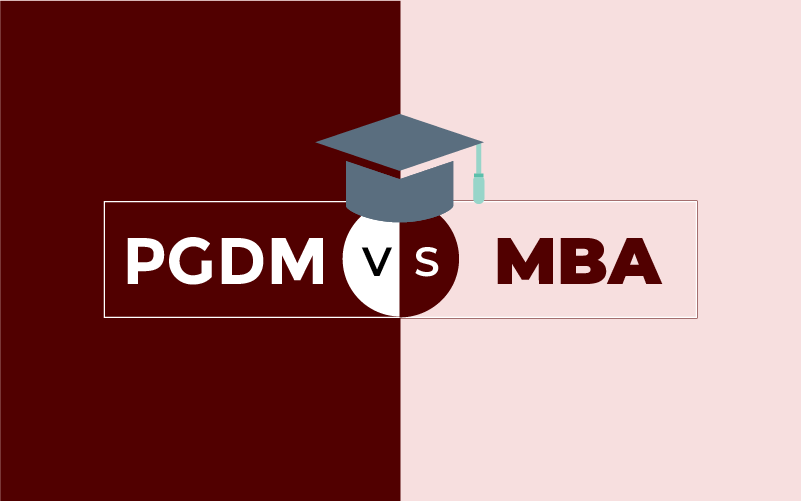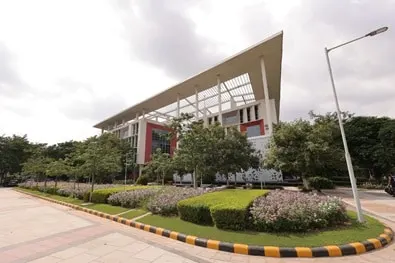Blogs


Difference Between Sales and Marketing – Must Read for MBA Aspirants

Ever since the role of external influences started impacting individuals in their buying and selling decisions, it has been a matter of keen interest and even debates onwhat is the difference between sales and marketing.
In the last five decades, with marketing becoming a researched subject and a core industry on its own, it is the pivot around which products and services are promoted into consumers.
The publication of “Marketing Management: Analysis, Planning and Control “by Philip Kotler, the father of modern-day marketing principles, gave a new dimension to the field altogether. This book with its detailed empirical research went on prove that marketing is not a loose concept.
It is an essential part of national economics which will set the tone for the contours of social buying and selling.
With every passing year, the modern-day corporates then began to emphasize adapting marketing techniques in a procedural and structured manner based on carefully studied back- data and on-going trends of product preferences.
This would be applicable for retail consumers and business entities. The former is swayed or convinced by the promotional methods, and the latter uses the methods.
At the other end, business to business models will also rely on marketing to spend their sales and growth.
Today marketing management is a core subject in almost every business school and college. Its importance is ever growing and new strategies, methodologies continue to evolve.
This has given rise to the question whether Marketing and Sales are the same and is there any theoretical or practical difference?
- What is Sales – It is the process through which the product or services exchanges hands from the provider to the buyer for a pre-decided sum of money. In other words, it is a contract between the seller or the vendor and the customer or the buyer.
- What is marketing – It is the process through which the entire marketplace consisting of sellers, buyers, intermediaries, products, pricing, place, economy, and even overall social conditions is analysed and accordingly strategies to increase reach and spread is formulated.
Difference Between Sales and Marketing
- Theoretical aspect and meaning – As mentioned above, sales is the inter-personal communication which enables the transfer of a product or services from one hand to another for an assured amount of money.
This communication may start from the manufacturing point to the final consumption point passing through a series of intermediaries or otherwise. These may be case specific.
Marketing, on the other hand, is a total 360 degrees understanding of the market from a macro viewpoint which enables understanding of the consumers' choice and preferences. This entails the acceptance of every new product which may be introduced to the market. Sales are also a part of the same. In that sense, marketing is all-comprehensive.
- Orientation-The concept of sales is oriented towards a particular product or a particular service. It does take into account the requirement of the customer but in such a way that the customer is attuned to the product.
If a particular product is not suitable, then a new product is introduced, which goes through the same sales cycle process. This is especially so in business to business models.
Marketing, on the contrary, is by and large oriented towards the customer. The product is introduced in the market as per the requirement of the market at that particular point of time.
There is a lot of background work which goes into understanding the need of the market and its constituent customers.
- Focus and Approach- Sales, as mentioned earlier in its totality is a point to point interaction which enables the competition of a successful transaction. It just takes the slow and steady development of a good interpersonal relationship to ensure a regular and on-going sales transaction.
The overall market upturns may not affect this sales cycle. Hence, sales in its totality, take the route of a specific and non-deviating approach. The focus is restricted to a particular business entity or unit.
Marketing as compared to this takes an overall all-encompassing approach which looks into every aspect surrounding the particular product or service. It takes into account previous, current and even futuristic requirements and preferences.
The approach cannot afford to neglect any aspect which will complete the acceptance and sustenance cycle. The focus is open to every market feature and trends.
- Timeframe and Durability- Sales has a shortened duration. It is for a particular time, segment and needs. It does not take a long-term view, and changes are fast, short and swift.
Marketing takes a long-term view, and it is for the entire marketplace and not just restricted to any segment or field. This is especially so if the retail consumers are the driving force.
- No of persons involved -Sales has restricted number of contact points. Sometimes there may be just a buyer and seller. In certain cases, it may be more but still with a cut-off limit.
In the case of marketing, there is the consumer on one side and a multitude of sellers on the other sides which is unrestricted and purely depends on the market demand of the product.
- The Scope of Work- The scope is restricted to a single product for a single customer. Even if it exceeds, still there are clearly defined limits. The activity process in itself is more of human relationship management.
Marketing has a much wider scope consisting of research to understand the market nature, branding, and advertisement, customer mindset management, etc. The activity involves extensive media as a strong influencer.
- Objective- Sales guns for an emphasis on convincing the end user of the unique proposition and features of the product and service. Its end objective is to make the customer go after the product.The end objective of marketing is to have the product or service which is the requirement of the market and the consumer element of the market. In short, the product goes after the customers.
Crystalized and pointed differences
- Sales transfer the ownership from one person to another while marketing analyses the market and its constituent elements as a whole with the objective of ensuring sales happening through this pre-emptive approach.
- Sales is a short-term by its very nature while marketing is long-term and even endless.
- Sales are one-to-one relationship and marketing is one-to-many.
- The sales process is a transaction based process with the conclusion ending in a monetary angle while marketing is a study based process with the conclusion of satisfying customer needs.
- Sales are specifically person to person driven while marketing is media and person driven.
- Sales are the Caveat emptor which means that buyers have to beware while marketing is Caveat vendor which means that sellers have to beware!
- Sales are business specific, and marketing is market-oriented.
- Sales revolve around push strategy and marketing is pull strategy.
- In sales, the customer has to revolve around the product, and in marketing, the product has to revolve around the customer.
- Sales are a subset and part of marketing.
Definition with an Example
The easiest way to understand the difference between sales and marketing would be through an example.
Suppose Mr. X started a fast food joint in a major suburban locality which has various other types of eateries, restaurants, ice cream parlours already functioning.
Now Mr. X knows that if he wants to create an impact in the locality about his speciality snacks in his joint, then he needs to run around and spread the word and convince potential customers and other regular family outgoes to visit his joint.
At the same time, Mr. X also needs to emphasise the specialities and uniqueness of his delicacy snacks to these potential customers. There might also be offices and schools requiring party orders on special contract rates.
He needs to meet them personally, convince of his services and negotiate the best rates. If the workload is more, then he can hire a smart hand which will also expand the reach by connecting with the more customers and following up with existing prospects.
Assuming that Mr. X is in full gear doing the aforesaid mentioned activities to increase his revenue and profitability. But still, he feels that the desired penetration is not happening, or it has to be more.
There is also an existing competition which has its regular and loyal customer base and has reduced their prices so that customers do not tend to go anywhere else. One of the oldest restaurants in that suburban locality is also the regular sponsor for the college volleyball tournament since the last decade.
Here Mr. X decides that he needs to brand his joint in a big way. So he starts offering special festive season discounts and combo packs for walk-in customers. He places a quarter-page advertisement in the local newspaper offering a special weekend 25 % "happy hours” discount for weekends.
He then becomes the key sponsor for the annual school quiz competition and his fast food joints multiple banners and kiosks are displayed during the one week of school festivals. This gives a high visibility.
In this example, the former scenario is use of sales through person to person relationships to acquire customers and complete the transaction. It is quantitatively possible to measure the exact numbers achieved through sales.
The later on the contrary is the use of brand building through promotional means. This creates a name recall with the customer which leads to an increase in revenue. The measurement standards here are more qualitative and impact creating and spread will be over a longer period.
While both methods take a different route, the objective of Mr. X is same, i.e. to acquire more customers and increase the profitability of the fast food joint.
In that sense, both sales and marketing are complementary to one another and in the overall sense sales is one of the core subsets of marketing.
In our 2-year full-time MBA curriculum, we ensure the latest specializations and constant updating to social media for the latest trends, feedback, and opinions.
The selected students are trained in all aspects of business management at the highest level with vigorous in-house training and subject specializations.
Conclusion
While there can be spirited debates on the difference between sales and marketing and academicians can go into the nuances of the two aspects, the reality is that both go hand in hand and both are essential for the success of every product and service.
Ultimately marketing is the overall concept out of which sales are a key element, but still, it is part of marketing. It looked from that angle, a debate in itself may seem self-contradictory.
This is because there is no marketing activity which is bereft of sales. Human and interpersonal relationship is inherent to the success of any product acceptance. Media and Technology have their limitations at a point.
At the same time, while a sale is an important pillar by itself, without a concerted marketing strategy, it will reach a dead end.
Both are complementary to one another. This subtle yet very poignant difference between sales and marketing ranks these among of the most sought-after MBA courses in BML Munjal University.
At BMU, we aim to nurture bright young minds to bring out the best in them and drive sales and marketing aspects with the right level of balance.
Trending Blogs
-
6 Most Demanding Engineering Courses in Future (With Salary & Scope)
-
Top 20 High Salary Courses after 12th Science (PCM) 2025
-
Top 14 Career Options After LLB in India 2025
-
12 Fun Management Games For MBA Students
-
16 Prestigious Law Firms in India to Kickstart Your Career
Latest Blogs
-
BA LLB Subjects: A Comprehensive Guide to Syllabus & Career Prospects
-
MBA in Operations Management: Optimise Processes, Drive Growth
-
10 Best Law Colleges in Delhi NCR: Shape Your Legal Career
-
Highest Paying Jobs after BBA in India: Turning Degrees into Paychecks
-
B.Tech. Admission 2025: Your Path to a Promising Future in Engineering
-
Selecting the Right Major and Minor for BA Liberal Arts: An Ultimate Guide
-
The Ultimate MBA Admission 2025 Guide: Turn Ambition into Achievement
-
What Is Liberal Arts Education: More Than Just a Degree
-
Broadening Horizons: Exploring Liberal Arts Subjects
-
BBA LLB Course: Full Form, Admission Process, Fees, Syllabus & More
Related Blogs

MBA in Operations Management: Optimise Processes, Drive Growth
In the rhythm of daily life, efficiency is everything. From the timely dispatch of a package to the flawless execution of a manufacturing line, a smoo...

The Ultimate MBA Admission 2025 Guide: Turn Ambition into Achievement
Many professionals view the MBA degree as a leading academic path that enables them to progress in business leadership, management careers and entrepr...

New Education Policy (NEP): Rewriting the Rules of Higher Education
The New Education Policy (NEP) marks a groundbreaking step toward revitalising India’s education system to meet the demands of the 21st century. Thi...

MBA vs PGDM: Understanding the Key Differences
With the global business landscape evolving rapidly, the demand for skilled management professionals is at an all-time high. According to a recent rep...

Career Options After MBA: Explore Opportunities in Various Industries
An MBA is a globally recognised master of business administration degree that imparts managerial, leadership, and problem-solving abilities to you, op...

How to Calculate SGPA to Percentage: A Step-by-Step Guide
The evaluation of academic performance varies across every education system worldwide. In Indian Universities, particularly in the Credit System, the ...

